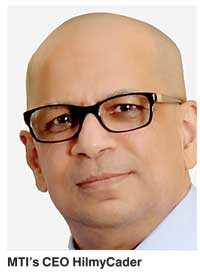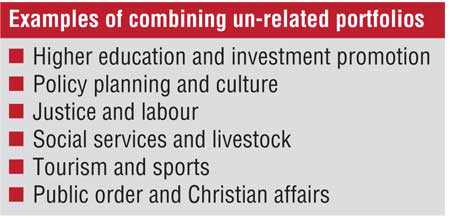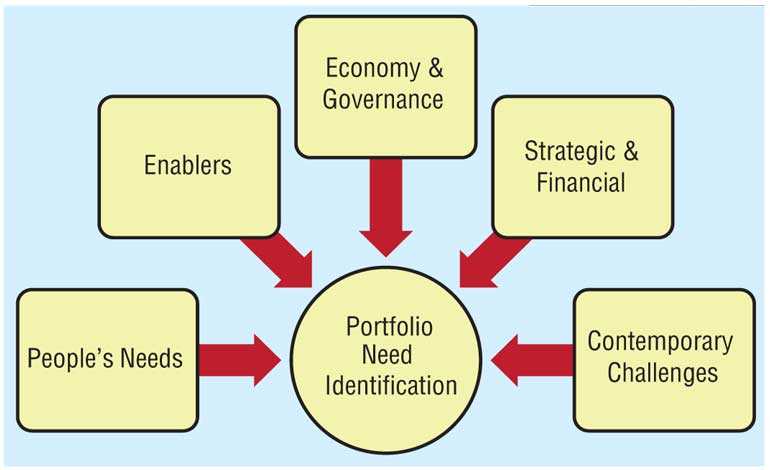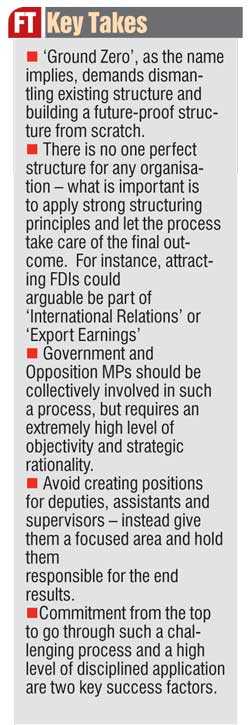Tuesday Mar 04, 2025
Tuesday Mar 04, 2025
Tuesday, 10 April 2018 00:04 - - {{hitsCtrl.values.hits}}
Calls for needs-based scientific approach that will cascade to remaining state organisations
If local media outlets are anything to go by, the su ggestion of radically restructuring the Cabinet is a welcome move and the nation hopes that this will not be just another outburst in a euphoric moment!
ggestion of radically restructuring the Cabinet is a welcome move and the nation hopes that this will not be just another outburst in a euphoric moment!
Structuring any organisation, irrespective of size and type, needs to be aligned to the purpose, direction and strategy of the organisation. This needs a very scientific approach, using purpose-specific structuring frameworks and an inclusive process of facilitating stakeholder involvement.
If this process is entirely left to politicians (whose only entry qualification is the popular vote, while few of them may have specific managerial and technical competencies), then it tends to be driven by political motives and not by what is in the best interest of the people of a country.
In this feature article, MTI shares some of the extensive thought leadership research done by it in the last two years.

Why apply ‘Ground Zero’ model to Sri Lankan Cabinet?
The net result of all these is a cluttered portfolio of ministries that lack focus. The installation of a new Government is an ideal opportunity to go completely Ground Zero and develop the ministerial portfolios based on the strategic needs of the country. Such a process could then lead to rationalising and restructuring/re-scoping the large number of state institutions that operate within the ministries.

Step 1: Go completely ‘Ground Zero’ – which means assume none of the current ministerial portfolios exist and avoid any reference to any current ministerial names, even later on in the process.
Step 2: Apply ‘People’s Needs’ as the first basis of structuring
If the above is applied to the Government of Sri Lanka, the first cut based on ‘People’s Needs’will be as follows:
Step 3: Identifying the ‘Economy and Governance’ based ministerial needs

Step 4: Strategic and financial implication for ministerial portfolio

Step 5: Contemporary national challenges – that demand ministerial focus
 How?Evaluate all the current/emerging socioeconomic and political challenges that the country encounters and decide if any of these warrant a dedicated portfolio. Accordingly, for Sri Lanka the following have been identified.
How?Evaluate all the current/emerging socioeconomic and political challenges that the country encounters and decide if any of these warrant a dedicated portfolio. Accordingly, for Sri Lanka the following have been identified.

Step 6: Ministries that are needed for the ‘Enabling’ role
Step 7: Rationalise the 36 Ministerial Needs that were identified by applying the five structuring criteria
Applying the five different criteria, we have arrived at 36 portfolios of varying scopes. While this is exhaustive, there is the possibility of overlaps and more importantly the need to rationalise and merge some of the portfolios – in the pursuit of ensuring a max of 15 Cluster Ministries (considered an optimal number).
Step 8: Arriving at the final list of 16 ‘Cluster Ministries’- by applying the following structuring principles:
“This is only one example of the Ground Zero model application – the end result depends on the quality of thinking and intellect that goes into the process. There could be several outcome possibilities and that’s not an issue, as long as there is process integrity and rigor”


Structuring considerations in arriving at the above

Step 9: Each of the ‘Cluster Ministries’ are then further segmented into ‘Sector Ministries’ – using the same structuring principles as above.
Example of Cluster to Sector segmentation
5 Sector Ministries reporting to the Cluster Ministry
Step 10: Set KRAs and KPIs - each Minister’s performance appraisal to be presented to both the Parliament and the public. Then, apply the process down to the next level of government departments and SOEs.
Discover Kapruka, the leading online shopping platform in Sri Lanka, where you can conveniently send Gifts and Flowers to your loved ones for any event including Valentine ’s Day. Explore a wide range of popular Shopping Categories on Kapruka, including Toys, Groceries, Electronics, Birthday Cakes, Fruits, Chocolates, Flower Bouquets, Clothing, Watches, Lingerie, Gift Sets and Jewellery. Also if you’re interested in selling with Kapruka, Partner Central by Kapruka is the best solution to start with. Moreover, through Kapruka Global Shop, you can also enjoy the convenience of purchasing products from renowned platforms like Amazon and eBay and have them delivered to Sri Lanka.
Discover Kapruka, the leading online shopping platform in Sri Lanka, where you can conveniently send Gifts and Flowers to your loved ones for any event including Valentine ’s Day. Explore a wide range of popular Shopping Categories on Kapruka, including Toys, Groceries, Electronics, Birthday Cakes, Fruits, Chocolates, Flower Bouquets, Clothing, Watches, Lingerie, Gift Sets and Jewellery. Also if you’re interested in selling with Kapruka, Partner Central by Kapruka is the best solution to start with. Moreover, through Kapruka Global Shop, you can also enjoy the convenience of purchasing products from renowned platforms like Amazon and eBay and have them delivered to Sri Lanka.